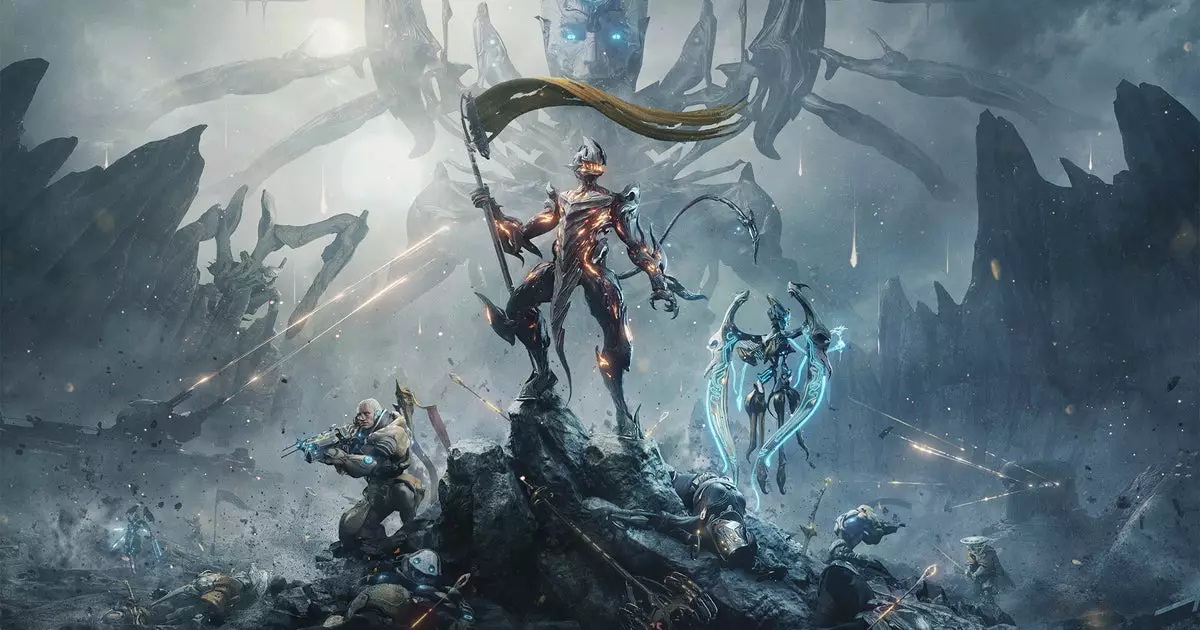Since its inception over a decade ago, Warframe has established itself as a titan in the evolving landscape of free-to-play MMOs. Its expansive universe, layered with intricate lore and a constantly expanding narrative, fascinates and intimidates in equal measure. Unlike many other titles, Warframe isn’t merely a shooter with shiny gear but an ever-evolving tapestry of storytelling, gameplay mechanics, and community engagement. The complexity it presents is both a testament to its dedication to depth and a barrier for new players. While the game’s surface offers frantic combat and stunning visual design, the true depth resides beneath—an intricate history of ancient wars, mysterious factions, and prophetic storylines that challenge even seasoned players to keep pace.
The ever-growing lore, which developers Digital Extremes have meticulously built, is a testament to their ambition. They are not content to rest on laurels but seem intent on pushing boundaries, making Warframe a living universe rather than a static game. This approach elevates it beyond a mere shooter, positioning it as a narrative-rich saga that requires patience and curiosity to fully grasp. The challenge lies in the game’s layering—new content often relies heavily on understanding previous events—creating a cycle where players become both explorers and historians of a sprawling sci-fi epic.
The Ambitious Future: The Old Peace and Beyond
Upcoming updates like The Old Peace exemplify Warframe’s relentless push for innovation. Announced with excitement at TennCon, this update promises to delve into a pivotal chapter: the aftermath of endless conflict, an era characterized by hopes for peace that ultimately proved elusive. The demo showcases intense battles against mechanized foes, speculating on the shadows of ancient conflicts and tying in the mysterious figure of The Lotus, who acts as the narrative linchpin guiding players through the chaos.
Rebecca Ford, the creative director, emphasizes that The Old Peace isn’t just about battles but about understanding the complexities of war and peace—an exploration of what came before the current conflicts. It introduces a new faction, the Dax Anarch Warriors, and expands the skill tree, hinting at a richer, more strategic gameplay experience. The narrative threads suggest that Warframe’s universe is not static but a living history, constantly shifting with each update. The standalone side story, The Devil’s Triad, further enriches the lore by challenging players with formidable bosses and offering new Warframes, including Uriel, a character layered with symbolism and significance, especially considering its association with Michael Brennan, whose passing marks a poignant moment in the game’s artistic journey.
This commitment to storytelling isn’t merely cosmetic; it’s the core of Warframe’s enduring appeal. It invites players to invest emotionally and intellectually, making each update not just a gameplay enhancement but a chapter in a grander story. The promise of future content, from the Tau update in 2026 to ongoing narrative arcs, suggests this game is on an unstoppable trajectory, continuously evolving while honoring its deep roots.
The Cultural Impact and Creative Expansion
Digital Extremes’ visionary approach extends beyond traditional gameplay. The upcoming Warframe x Starfinder collaboration signifies a strategic move into new entertainment territories—creating a tabletop RPG module that fuses elements of the digital universe with pen-and-paper role-playing. This effort demonstrates confidence in the franchise’s rich narrative potential and its capacity to transcend gaming into broader pop culture phenomena.
Meanwhile, the planned autumn update exhibits the developers’ desire to blend aesthetic customization with gameplay expertise. Features like the Lavos Deluxe cosmetic and a rework of the Oberon frame serve to keep veteran players engaged and attract new ones seeking stylistic flexibility. The inclusion of The Teacher quest, focused on modding, underscores the game’s evolving complexity—encouraging players to deepen their mastery and understanding of intricate game mechanics rather than just grinding for gear.
While some might see this as overwhelming, it actually cements Warframe’s position as a game that demands engagement on multiple levels—from combat to lore, from aesthetics to strategy. It hints at a developer committed to nurturing a vibrant community of dedicated players who see their journey as more than just grinding—it’s a漫漫 exploration of a universe teeming with stories waiting to be uncovered.
Beyond Warframe: A Reflection on Innovation and Persistence
The ongoing development of Warframe and its multi-layered storytelling underscore an essential truth: innovation isn’t merely about flashy updates but about building a resilient, evolving universe that captivates and challenges. Warframe’s future updates hint that this game will continue pushing boundaries—expanding its lore, refining gameplay, and engaging its community in ever more meaningful ways.
Digital Extremes is not merely resting on its laurels but actively shaping what a live-service game can be. By planning to introduce new factions, complex narratives, and cross-media collaborations, the developers demonstrate a clear understanding of how to keep a universe alive. Warframe’s relentless drive indicates that it is still in its prime, eager to redefine what an MMO can accomplish in storytelling, gameplay innovation, and cultural influence.
As the franchise approaches its next chapter, it becomes evident that Warframe isn’t just surviving; it’s thriving by embracing its history and boldly charting a future filled with possibilities. Nevertheless, critical eyes must remain vigilant—such sustained growth demands careful storytelling, community support, and innovation that balances complexity with accessibility. How well Digital Extremes manages this delicate dance will determine whether Warframe’s incredible journey continues to resonate as a landmark in the industry or becomes another fleeting success lost to overextension.

